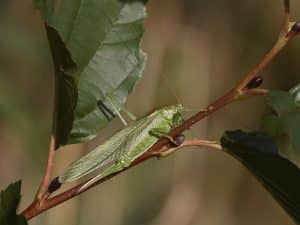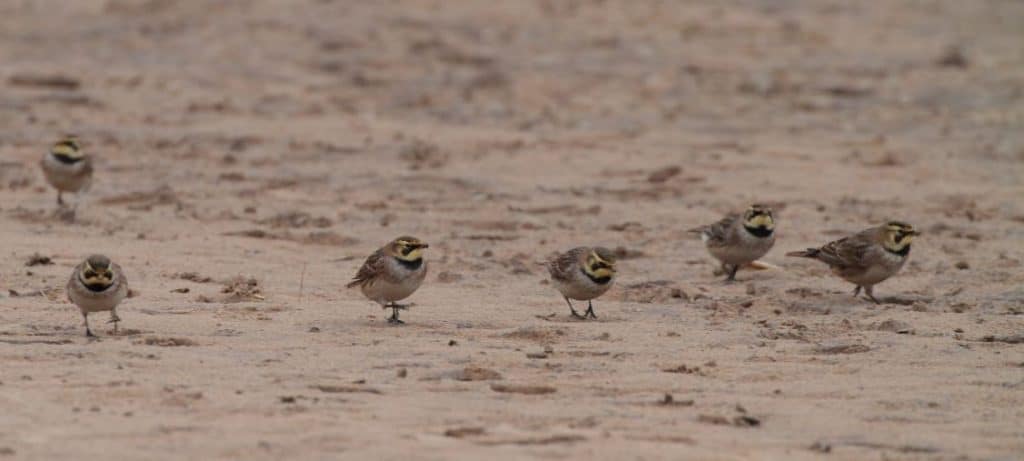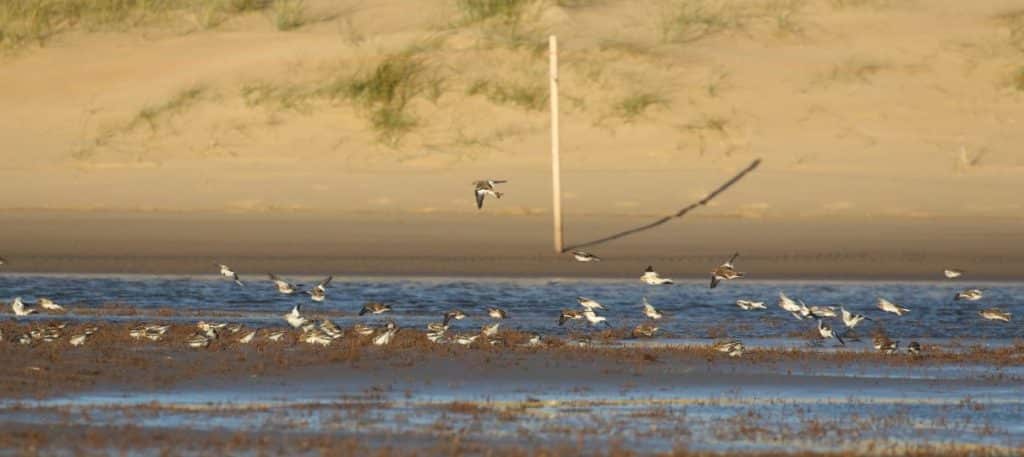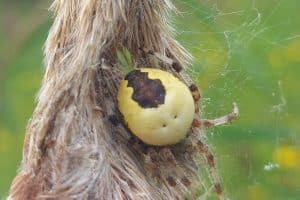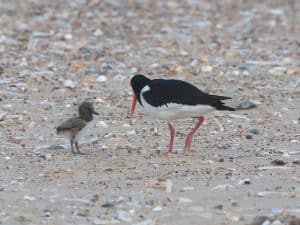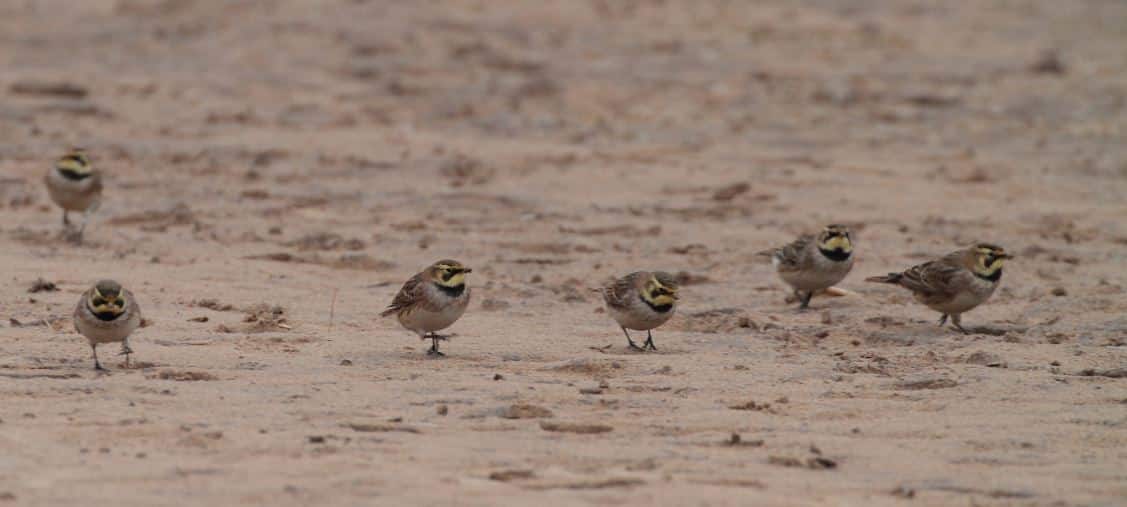
Travellers from the North
January 11, 2019 | Nature news | 7 minute read
The late autumn and early part of the winter has been mild and dry at Holkham which has consequently meant that numbers of wintering ducks on the marshes have been quite low. There has however been much interest from visiting birdwatchers due to three special species of songbird which have arrived on the reserve in recent weeks. They all have one thing very much in common; they all come from extremely cold breeding grounds in the northern extremities of the World.
The most popular attraction for visitors and locals alike has been the appearance of a group of Shore Larks on the beach and developing saltmarsh between Holkham and Wells. Although essentially sandy brown song birds, they have very distinctive yellow faces with black bandit-like masks and tiny horn-like feathers extending from their crowns when in their breeding plumage.
This has led to the species being called the ‘Horned Lark’ in most of its range but as here in Britain they are associated with coastal habitats, so they became known as Shore Larks. Breeding on the tundra in places such as northern Scandinavia and Russia, small numbers descend each autumn to the coasts of eastern England and in recent years Holkham has proven to be one of the most regular sites for attracting them. This year we have up to 27 of them wintering and it seems every day there are people coming to see them.
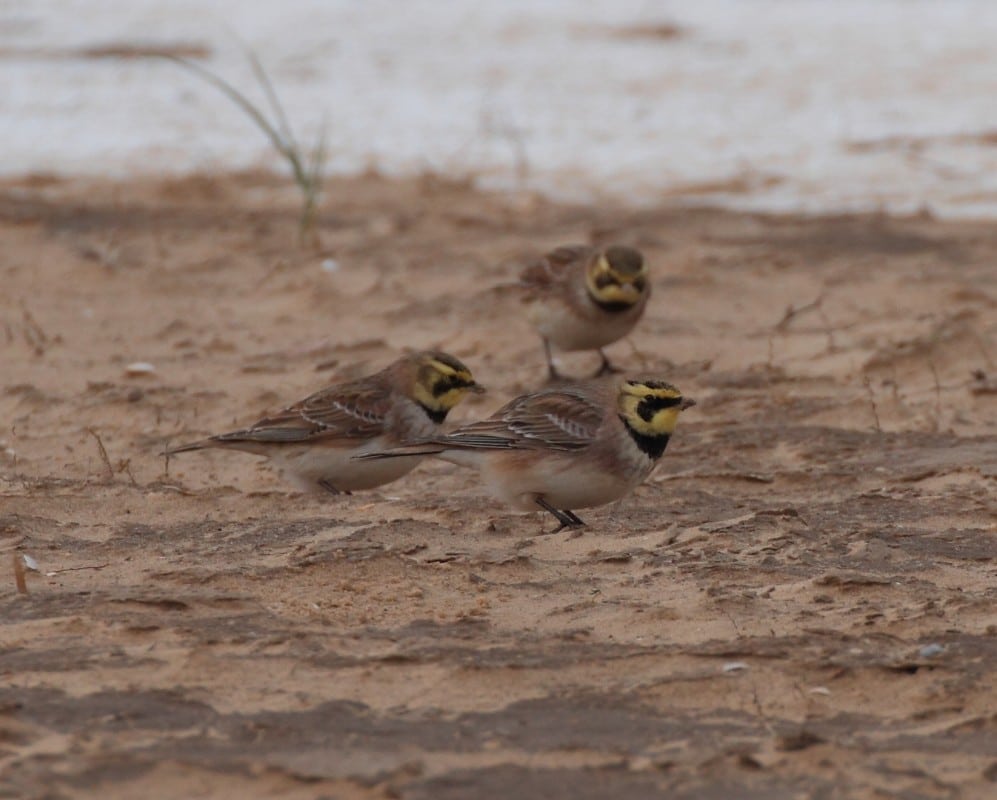
Shore Larks are charismatic little birds with their unique black and yellow faces
Last year we encountered several problems that we felt could and should be remedied quite easily. Although the larks frequented a wide area they favoured the fledgling salt marsh where plants such as glasswort (samphire) and sea purslane are their favoured food source. Given the opportunity the birds would naturally stay there but with the beach on busy days being alive with walkers and dogs not to mention the birdwatchers and photographers in search of them, the birds were constantly being flushed from place to place.
To combat this we have erected a large signed enclosure around their favoured area. It has been gratifying to see an instant positive effect. Apart from the odd dog that strays into the area, for the most part the birds can now be watched disturbance free – the birds are happy and so too are the people who come to watch them as they do not have to spend an eternity searching for them in every other part of the beach. A tip to anyone heading there for the first time with a dog is to keep it under close control when approaching the area; it just lessons the temptation for straying into the cordon and ultimately reducing disturbance further still.
Shore Larks are busy, restless birds that are always on the move. They methodically wander across the area constantly picking up seeds as they go. As the winter moves on, so they begin to prepare for the imminent breeding season. The male’s colours start to heighten as do the formation of their ‘horns’ and so they begin to bicker and even sing on warmer days. Whilst the flock this year has reached 27 birds far larger numbers have appeared in the past. In 1998 a widespread influx occurred to the British Isles and here at Holkham we managed to attract 240 birds the largest flock ever seen before or since in the country.
Also favouring the same area is another species from the far north – the Snow Bunting. This buffy brown and white sparrow-sized bird makes it summer home on the mountain tops of Scandinavia, Iceland, and even Scotland and like the Shore Lark drops down to lower levels including coastal saltings and beaches. Ordinarily numbers are a bit more widespread along the Norfolk coast than the Shore Lark but they can sometimes still take some finding.
This year up to 160 have been sharing the same enclosure as the larks thus giving birdwatchers an even greater experience as they watch them all mingle together side by side. These birds are even more flighty than the Shore Larks and are constantly flying up and down the beach. With the flock flashing vivid white as they pass by the impression is often of seeing a blizzard of snow caused by their beating wings. It gave them the old and aptly named title of ‘snowflakes’.
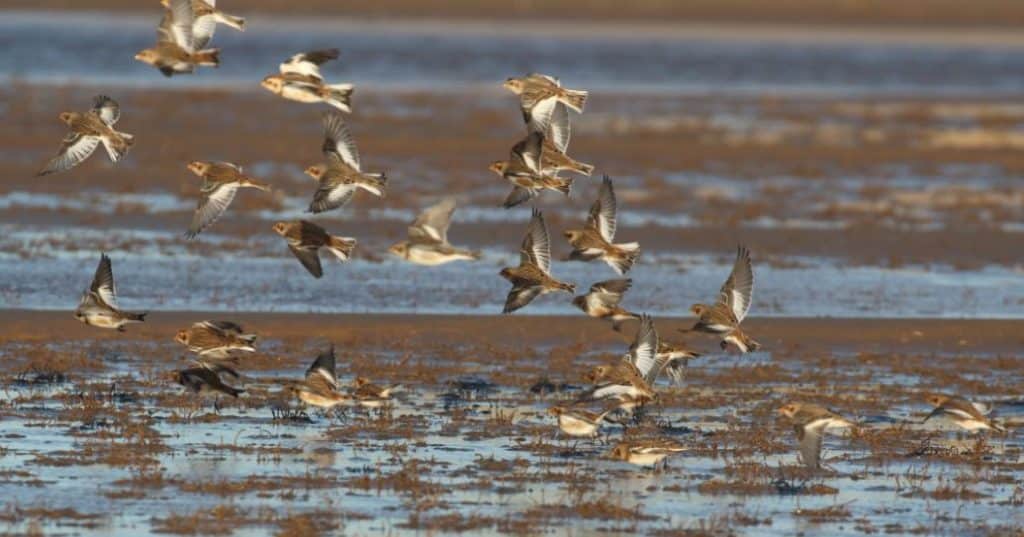
With the vivid white flashes in their plumage, the sight of a Snow Bunting flock was often referred to as a blizzard of ‘snowflakes’
The final species from the far north that is attracting the birdwatchers to the reserve is a member of the finch family, the Artic Redpoll. As its name suggests it lives in the Arctic and has a circumpolar range that takes in Alaska, Canada, Greenland and much of northern Europe and Asia. It breeds in some of the harshest environments, in fact further north than any other songbird.
Unbelievably it has been recorded in temperatures down to as low as -67°c amidst snow drifts on the tundra and amidst scree slopes. There are stories of people skiing and suddenly seeing flocks erupt from beneath the snow in front of them. They can literally bury themselves into the snow if there is food to be found. Periodically small numbers make a journey south to the UK to spend the winter favouring weedy fields where they search for seeds often amongst other finches. If we are lucky enough to encounter them on the reserve it is in the birch trees of Wells Pinewoods that is a favoured spot and this autumn and early winter as many as six have been seen.
They are delightful birds, being a subtle mix of pale greys and whites with a red forehead (its ‘poll’) and whilst they look quite chunky finches they only weigh between 12 and 16 grams (in contrast our Chaffinches weigh 21 grams). Much of their bulk is derived from their loose fluffy feathering; the perfect insulation for their arctic homeland. These birds are feeding amongst a flock of the slightly smaller, yet sometimes very similar Mealy Redpolls (also from the north) and smaller still, the browner Lesser Redpolls that formerly bred in the vicinity in the birch woods.
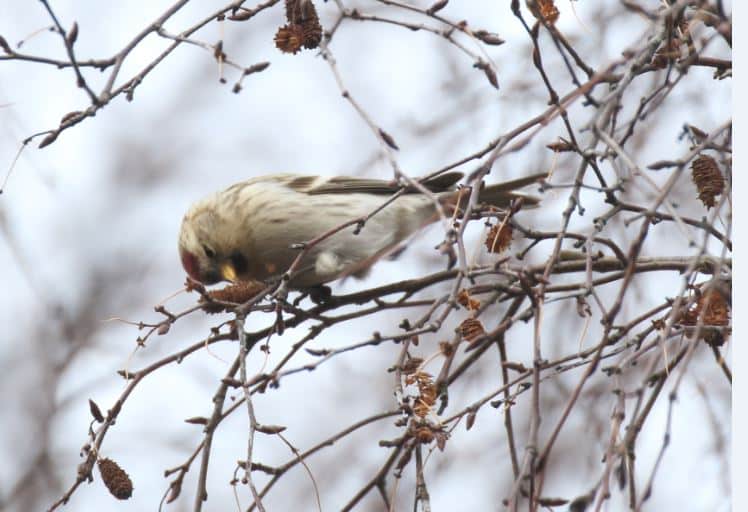
The Arctic Redpoll a vagrant from the far north that rapidly devours birch seeds in Wells Pinewoods when it arrives.
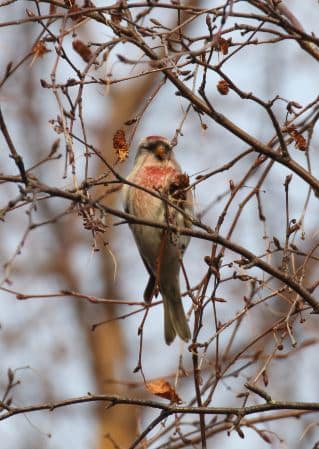
The similar Mealy Redpoll has also appeared in good numbers. This mature male shows its distinctive red cap and pink breast feathers.
For all these birds their stay will probably only be brief, by March and April the majority will be off back to the north to prepare for nesting. In the meantime make the most of them, come along to see them and enjoy a touch of the Arctic, despite being in lowland Norfolk in the height of what is so far a very mild winter.
View all latest blog posts here.
Related journals
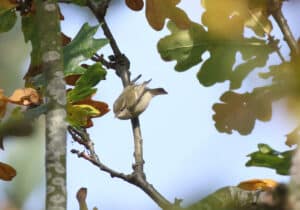
Conservation conversations: November 2025 on the Holkham National Nature Reserve
Nature news
Read more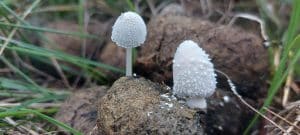
Conservation conversations: October 2025 on the Holkham National Nature Reserve
Nature news
Read more